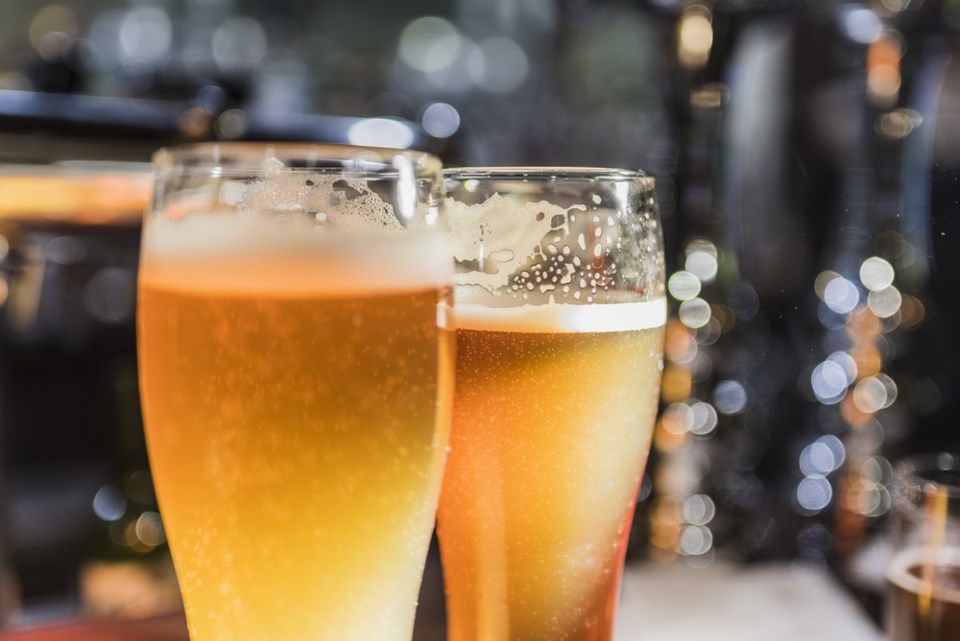A new decade is upon us, and with it endless possibilities for the future of craft beer. But what exactly does the crystal ball predict for the year ahead? We certainly have some opinions about what beer trends are to come…
Check out some of our previous predictions for and , which we totally nailed. Obviously.
The plateau is nigh
I get asked a lot if we’ve reached “peak beer” here in B.C., which is a super weird question. Have we reached peak restaurant? Peak doughnut shop?
I don’t think craft beer is something that has a peak. Once people are introduced to craft beer and discover that they actually enjoy well-made, delicious beer with actual flavour, they don’t turnaround and decide to go back to fizzy macro garbage.
That being said, B.C. has experienced some pretty crazy growth in the craft beer industry since 2012, and obviously that’s not going to last forever. In 2012, the provincial government finally relented and allowed craft breweries to operate their own tasting rooms, thus making it economically viable to open a modern brewery for the first time. The demand for craft beer was always there, but suddenly the supply was allowed to meet the demand, resulting in the craft beer revolution we’ve seen since. But now, eight years later, supply is finally catching up to demand.
There are close to 25 slated to open around the province in the next calendar year, down from 30 in 2019. While I think the total number of breweries in B.C. will continue climbing, that growth will undoubtedly slow.
While there won’t be a peak, per se, I do think a plateau is certainly coming as the industry finally begins to settle. Fewer breweries will open, and we’ll see , but that’s what a mature craft beer industry looks like.
Farm-grown goodness
The somewhat recent changes to B.C.’s Agricultural Land Reserve now make it possible to operate a brewery on ALR farmland, and that is opening up all sorts of possibilities for breweries who want to grow and malt their own grain. A handful of breweries have already dabbled with growing and malting their own barley, and we see that trend continuing. More small-scale maltsers means more custom malting, too, which could allow every B.C. breweries to put a 100 per cent B.C.-grown product in their pints.
Yeast rising
When it comes to craft beer terroir, yeast has long been the missing piece of the puzzle. You can brew a beer with local water, hops and malt, but the yeast—which is so important in determining the flavour and style of a beer—usually comes off the shelf from a laboratory on the other side of the continent. That’s starting to change, however, as more breweries experiment with isolating local yeast cultures. Field House Brewing in Abbotsford was one of the first B.C. breweries to develop its own strain of wild brewing yeast, harvested and propagated from its farm. This is highly technical stuff, but it could open up so many possibilities for unique flavours, that can only be found in B.C.
Mix it up
Is mixing two beers together to make a new beer… cheating? No! The lambic brewers of Belgium have been blending beers since forever, and increasingly B.C. breweries and tasting rooms are getting on board, too. Think of a Black and Tan, but elevated to craft beer standards. Phillips’ tasting room does a new daily blend every day. Beach Fire Brewing in Campbell River won Best of Show at the North Island Craft Beer Festival for its Creamsicle beer, but the real winner was the Terry’s Chocolate Orange-inspired blend that resulted from mixing it with a chocolate porter. I recently had a stout mixed with a raspberry sour, and it was fantastic: it tasted exactly like a black forest cake! Mixing beers is an easy way for craft breweries to offer their customers even more craft beer choices, so expect to see more of it.
West Coast 4 Lyfe!
The haze train is here to stay, but I keep seeing people going back to the O.G. hop-head classics. West Coast-style hop bombs are better than they’ve ever been, thanks to the end of the hops arm race, a greater focus on balance and a new palette of hops for brewers to work with. The citrus-forward flavours and dry finish of a West Coast IPA continue to make it endlessly crushable, while the assertive hop bitterness and malt character make it perfect for pairing with food. If I wanted a glass of juice I’d steal one of my kid’s Capri Suns.
How low can you go
The next logical evolutionary step in the session beer trend is low calorie craft beer. Look for full-flavoured and in some cases even full strength craft beers that advertise reduced calories. A few examples have already popped up, like Bridge Brewing’s PrimeTime: it’s a 5.0 per cent ABV American wheat ale with 110 calories per can — almost half of what you’d expect from a comparable lager. Which is great, because getting fat kinda sucks. It’s lots of fun, though.
Read more from








